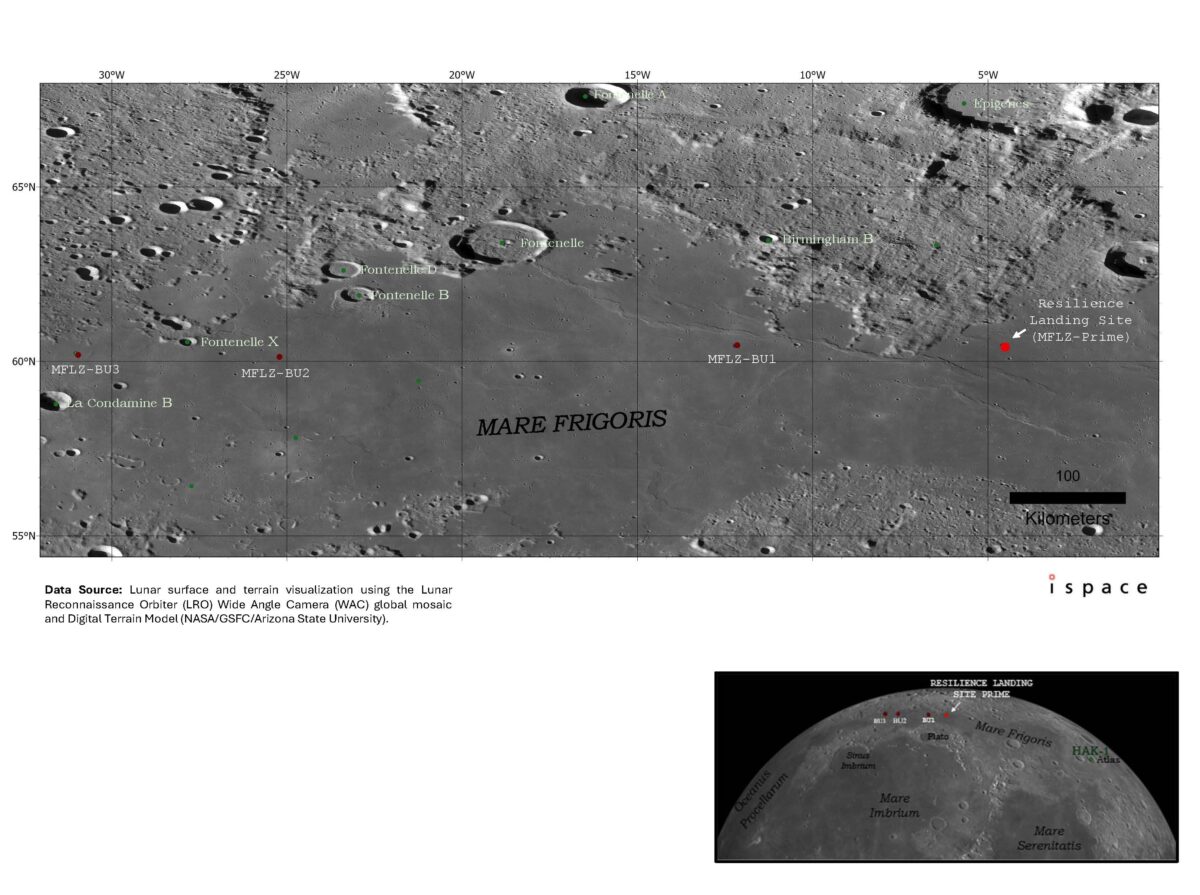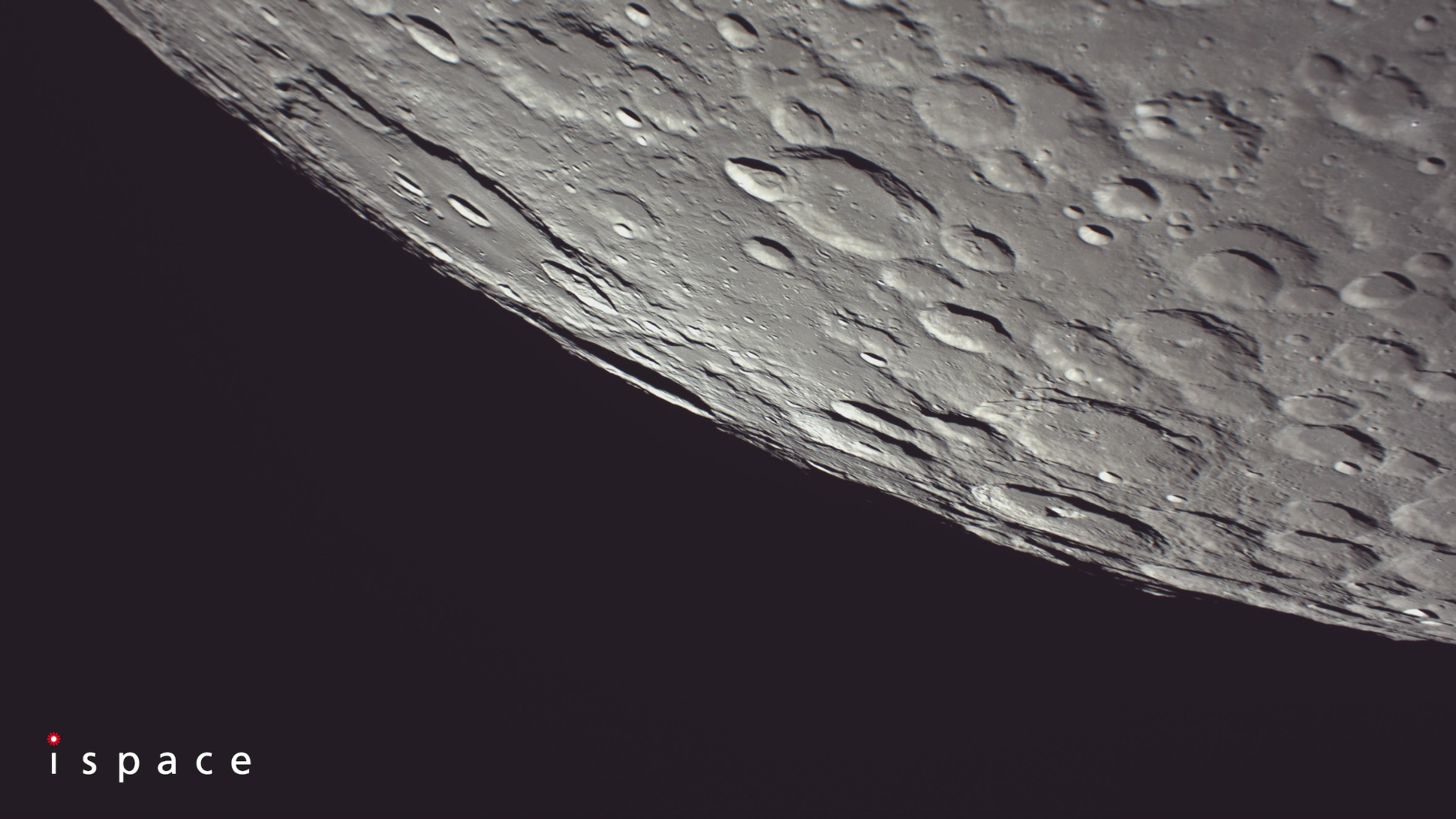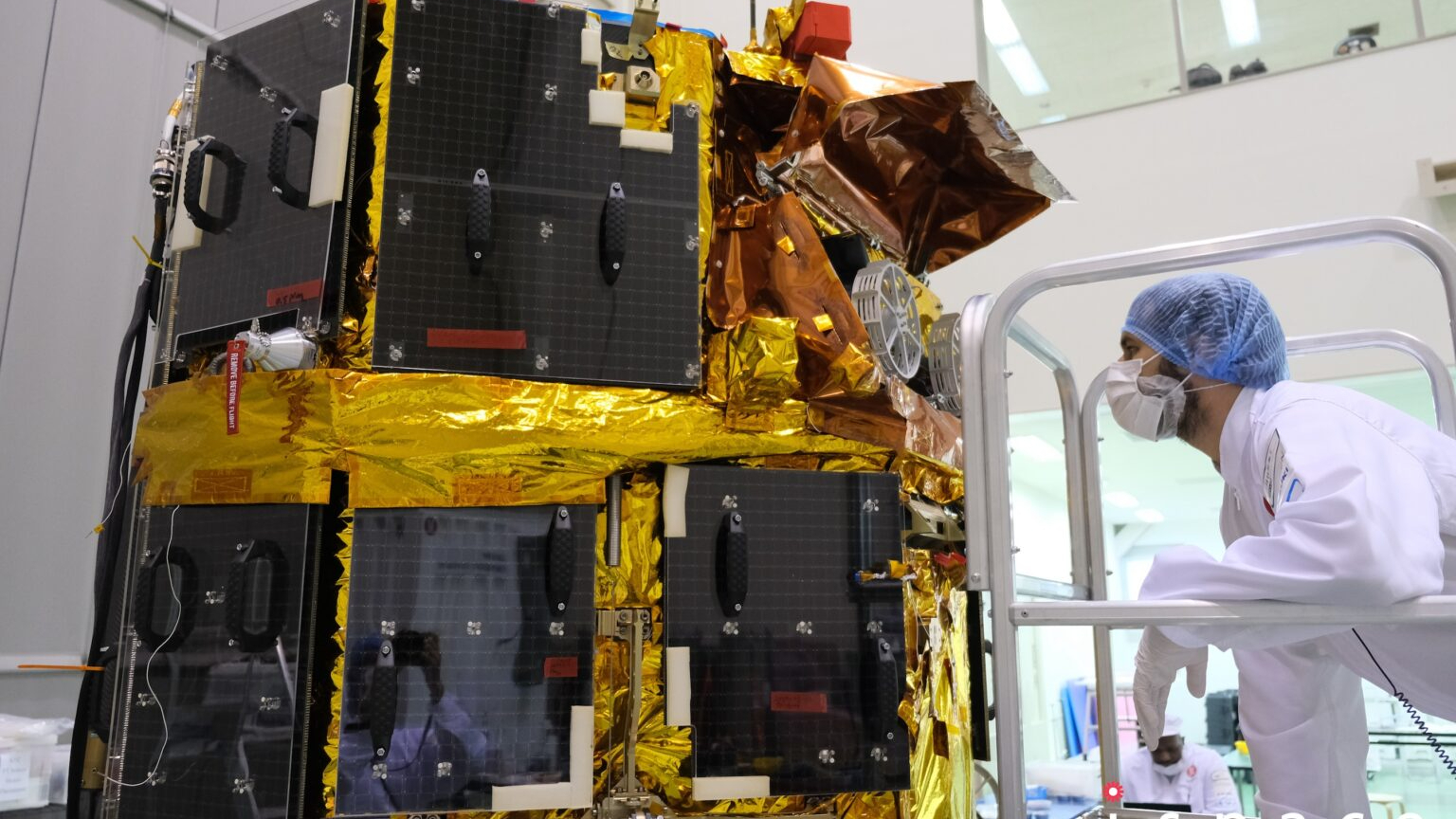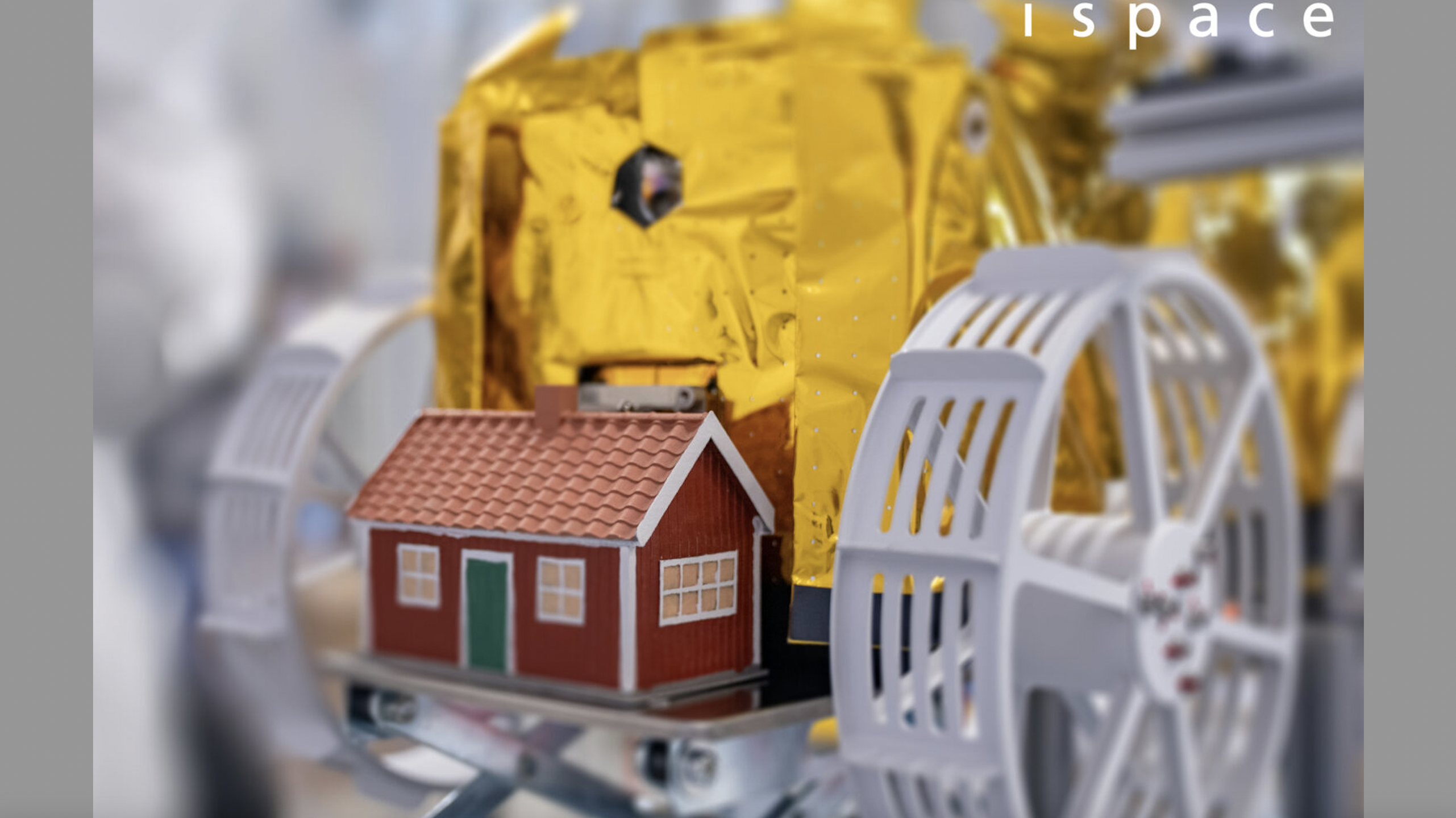What time is Japan's private ispace moon landing on June 5 (and how to watch it live)?
The private ispace Resilience lander will land on the moon at 3:17 p.m. EDT today (June 5), but only if the company pursues its prime landing spot. Here's why.
Update for 5 p.m. ET: The Japanese company ispace attempted to land its Resilience moon lander on the plains of Mare Frigoris (Sea of Cold) on the moon today at 3:17 p.m. ET, but lost contact with the spacecraft during its final descent. The fate of the spacecraft is unclear. A press conference is scheduled for 8 p.m. ET tonight for an update.
The Japanese company ispace is hoping to make some space history on Thursday (June 5), when it attempts to land a private spacecraft on the moon. But if you're hoping to watch it live, you'll need to know when and where to tune in.
The Resilience lander, the second-ever private ispace lunar probe, is on track for a midday landing in the northern reaches of the moon. Resilience is flying a mission of redemption for ispace, which failed a similar moon landing attempt with its first effort, called Hakuto-R Mission 1, in April 2023.
Here's a look at what time ispace's Resilience moon will attempt to land on June 5, how to watch it and what may happen during the mission.
What time will ispace's Resilience land on the moon?
Currently, ispace's Resilience moon lander is scheduled to land on Thursday, June 5, at 3:17 p.m. EDT (1917 GMT), though it will be 4:17 a.m. Japan Standard Time on Friday, June 6, at touchdown time. That landing time, announced in a June 4 update, is about 7 minutes earlier than ispace's earlier target of 3:24 p.m EDT (1924 GMT),.
That landing time follows a specific timeline of events ispace has laid out to deliver Resilience to the lunar surface. A SpaceX Falcon 9 rocket launched Resilience toward the moon on Jan. 15 along with the private Blue Ghost moon lander built by Firefly Aerospace. (Blue Ghost successfully landed in the moon's Mare Crisium, or Sea of Crises, region on March 2.)
Unlike Blue Ghost, Resilience followed a "low energy transfer" path to reach the moon, which added months to the journey. It arrived in lunar orbit on May 6 and is finally ready for its landing attempt.
Breaking space news, the latest updates on rocket launches, skywatching events and more!
While ispace is targeting June 5 at 3:17 p.m. EDT (1917 GMT) for the moon landing, that time could actually change. The prime landing spot is in the middle of Mare Frigoris, or the "Sea of Cold," on the near side of the moon's northern hemisphere. If ispace decides to use a backup landing site (there are three in all), those attempts would occur on different days and times.
"Should conditions change, there are three alternative landing sites that are being considered with different landing dates and times for each," ispace wrote in an update on social media.
Can I watch ispace's Resilience moon landing?
Yes, you'll be able to watch ispace's Resilience lander attempt to touch down on the moon live as it happens, and you'll be able to pick which language you'd like to follow the mission when you do.
The livestreams will begin at 2:10 p.m. EDT (1810 GMT/3:10 a.m. JST on June 6) with the landing itself targeted for 3:17 p.m. EDT (1917 GMT; 4:17 a.m. JST on June 6).
"ispace will host a global live stream event with coverage of Resilience's landing attempt on the moon on June 6, 2025 (JST) (June 5, 2025, depending on location)," ispace wrote in an announcement. "The coverage will be broadcast in Japanese with English translation provided."
Both will be webcast via ispace's YouTube channel, with the English broadcast here and the Japanese broadcast here.
Where will ispace's lander touch down on the moon?

The Resilience moon lander will attempt to land on a vast basalt plain in the moon's near side northern hemisphere known as Mare Frigoris.
ispace targeted the same plain in 2023 when the company attempted to land its first moon lander on April 25 of that year. During that attempt, which crashed as mentioned above, ispace tried to land in Atlas Crater, which is 54 miles (87 kilometers) wide. ispace does not appear to be targeting the same crater for Resilience, which is also known as Hakuto-R Mission 2. (Hakuto-R is the name of ispace's lunar exploration program as well as its line of robotic rovers.)
Instead, the lander is expected to touch down in the northern region of Mare Frigoris, with three potential backup landing sites, according to a map released by ispace before launch.
How long will ispace's Resilience last on the moon?

Once on the moon, ispace's Resilience lander is expected to last about two weeks, or one lunar day. But the full mission, from launch on Jan. 15 to the end, will run about five months.
The spacecraft is equipped with solar panels to power its onboard instruments, and will spend that time conducting experiments with several payloads. They include the following:
- Water Electrolyzer Experiment: An experiment built by air conditioning equipment manufacturer Takasago Thermal Engineering Co. to test technology to generate oxygen and hydrogen from moon water.
- Algae-based food production module: An experiment designed by Euglena Co. to test ways to grow algae on the moon as a potential source of food.
- Deep Space Radiation Probe: A small detector that has been monitoring radation levels on Resilience throughout its months-long mission.

Resilience is also carrying a microrover called Tenacious, which was built by ispace's European subsidiary. If all goes well, the rover will be deployed on the surface to test its camera and sample-collection shovel for future sample return missions.
The Tenacious rover is also carying a work of art called "Moonhouse," a small red house designed by Swedish artist Mikael Genberg, as part of a cultural program for the mission.

Finally, Resilience is carrying a commemorative plate provided by Bandai Namco Research Institute, Inc. with an inscription based on the fictional document "Charter of the Universal Century" from the famed Japanese manga and science fiction series Gundam.
What if ispace's Resilience can't land on the moon on June 5?
Fly me to the Moon 🎵🌝RESILIENCE status: nominal Distance above the Lunar surface: ca. 100 km Current orbital phase: Low lunar orbit, traveling at ca. 5,800 km/h RESILIENCE remains in a circular orbit as landing day approaches. This video was captured from lunar orbit by… pic.twitter.com/Ll7FCudqL5June 4, 2025
While ispace is hoping for a smooth landing of Resilience on June 5, it is possible the company may wave off the lunar touchdown due to technical or other concerns.
As a way to prepare for that, ispace has identified three different backup landing sites, all of them in the Sea of Cold, that the company could redirect Resilience to if its primary landing site is unavailable.
If ispace does decide to pursue a backup landing, the lunar touchdown would occur on a later day and time than targeted, the company has said. Exactly what day and when those attempts could occur is unclear, but we'll keep you posted if the situation arises.
Editor's note: This story, originally posted on June 3, was updated on June 4 to include the new landing time and backup landing site options for ispace's Resilience lander.

Tariq is the award-winning Editor-in-Chief of Space.com and joined the team in 2001. He covers human spaceflight, as well as skywatching and entertainment. He became Space.com's Editor-in-Chief in 2019. Before joining Space.com, Tariq was a staff reporter for The Los Angeles Times covering education and city beats in La Habra, Fullerton and Huntington Beach. He's a recipient of the 2022 Harry Kolcum Award for excellence in space reporting and the 2025 Space Pioneer Award from the National Space Society. He is an Eagle Scout and Space Camp alum with journalism degrees from the USC and NYU. You can find Tariq at Space.com and as the co-host to the This Week In Space podcast on the TWiT network. To see his latest project, you can follow Tariq on Twitter @tariqjmalik.
You must confirm your public display name before commenting
Please logout and then login again, you will then be prompted to enter your display name.


